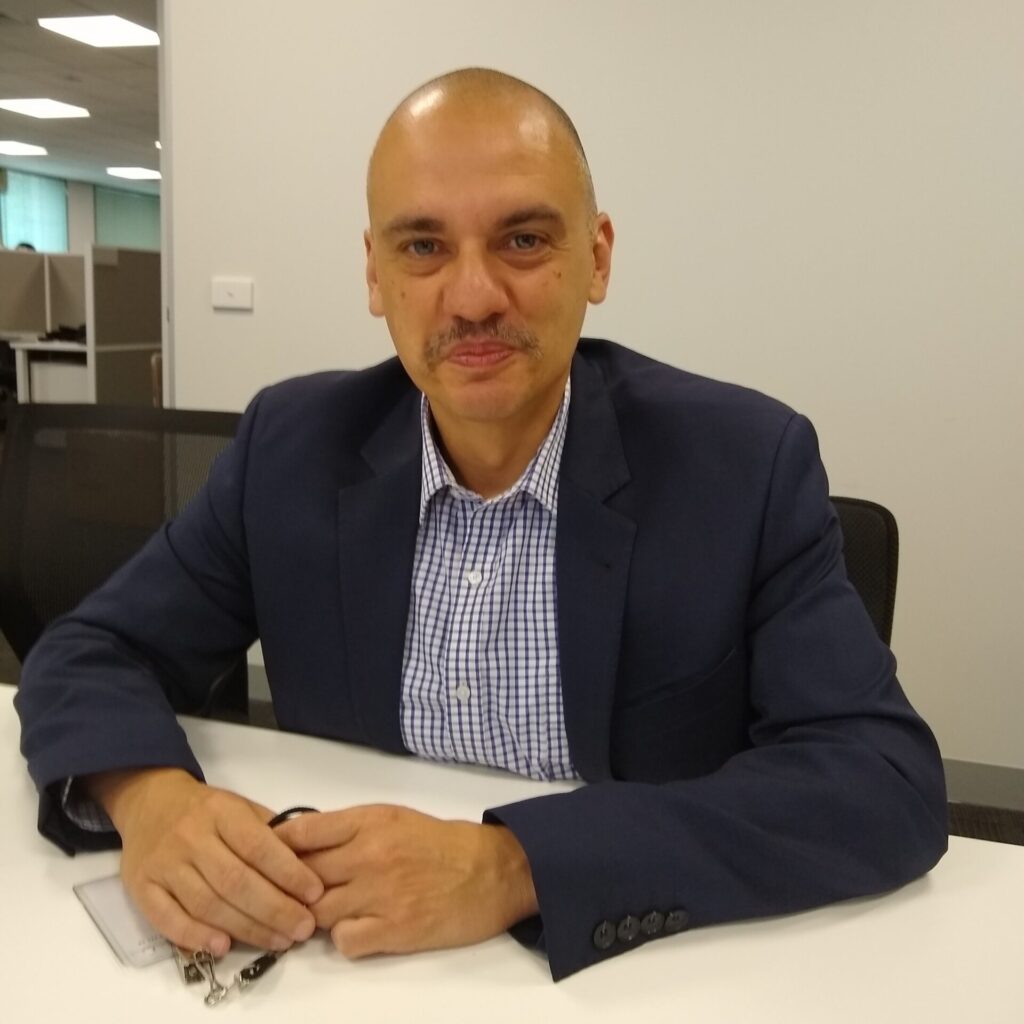Introducing Professor Stan Skafidas
A legend of nanoelectronics, Stan Skafidas is trying to build a tricorder. Star trek fans will understand. He also works with our industry engagement and commercialisation teams.

Founder, inventor and academic, Stan Skafidas is renowned for seeing technology trends years before they happen. Stan led the development of adaptive frequency-hopping technology that now forms a critical part of Bluetooth – incorporated into several billion everyday devices. His research in nano-electronics has advanced the disciplines of wireless communications, single chip radars and medical diagnostic systems.
Stan leads the Melbourne School of Engineering’s research in nanoelectronics. He also plays a critical role on the Stroke Alliance’s Industry Engagement Council and our Commercialisation Committee. He has over 300 publications in the fields of nanoelectronics, neural engineering, biosensors and wireless communications.
And to top off his stellar career, he is listed as an inventor on 28 International patents.
Stan, with so much going on in your hectic and amazing career, why are you devoting time to the Australian Stroke Alliance?
Every year more than 38,000 Australians suffer a stroke, equating to over 100 people each day. It presents a tremendous burden to these individuals, their families, their friends and to the wider Australian community. This burden is even more pronounced for those living in rural Australia and outback communities where access to high precision diagnostics and treatment options are not readily available.
The Stroke Alliance is developing innovative real-world solutions to dramatically reduce the time from stroke to the patient receiving treatment. This will improve the long-term health outcomes for many fellow Australians. Being able to contribute expertise to develop solutions to such an important problem is very exciting.
What is most exciting to you when you look at the Alliance’s plans for the next five years?
The opportunity to transform how stroke is being treated by developing advanced imaging technologies which allow for the diagnosis and treatment at the patient location and critically before the patient has been transported to a major hospital. This would be a truly revolutionary outcome.
From a commercial perspective, where are the greatest opportunities for the Stroke Alliance?
The Alliance is developing new revolutionary lightweight imaging technologies and systems that can transform how stroke and brain injuries are managed. Traditional process sees paramedics transfer the patient from the incident location to a hospital where imaging tools are available to guide patient management. Critical time is wasted and in these valuable minutes, after a stroke event and before treatment is initiated, brain tissue is being lost. “In essence after a stroke, time is brain”.
The technologies the alliance is developing will help provide the information necessary for a differential diagnosis and for correct treatment to begin sooner and much before the patient reaches the hospital.
The global MRI market is estimated to be $5.6b pa. The Alliance has significant opportunity to transform, be major player, and even create a new market segment in this large and growing market.
You are an expert in nanotechnology – taking components of just a few nanometers in size and placing them in electronic components. How might nanoelectronics change the lives of people living with stroke?
Nanoelectronics permits complex and intelligent electronics systems, that would previously be large and cumbersome, to be substantially smaller, in many cases fit on the tip of your finger, consume significantly less power and have markedly increased compute capability. This provides the opportunity for next generation assistive devices, medical prosthesis and bionic devices, biosensors and diagnostics that are augmented with machine learning capabilities. This may provide benefit to people living with stroke by permitting for more capable diagnosis and patient management systems that can be used in remote areas. Bionics and assistive devices could be used to help people gain capabilities and function that they may have lost as a consequence of stroke.
They are destined to have a significant role in the health of Australians in the future. Are we close to a point of care diagnostics?
Telehealth now allows specialist medical and allied health practitioners to consult and manage the health for all Australians, including those residing in the remote corners of Australia. A major component for allowing complete remote delivery of medicine is the access to pathology tests. A research focus area for me is developing next generation point of care diagnostic devices. In essence, this would be a general purpose platform that is low cost and portable and reside in remote communities (or even in each individuals home), which can provide advanced pathology tests on demand. For all the “Star Trek” fans, I am trying to build a “tricorder”.
Final question: what makes a great day for you?
When experiments work as planned. They rarely do. There is always a gotcha which means going back to the drawing board to update theory.
Thumbnail photo credit (previous page): Bobbie Johnson Flickr (CC BY-SA 2.0)